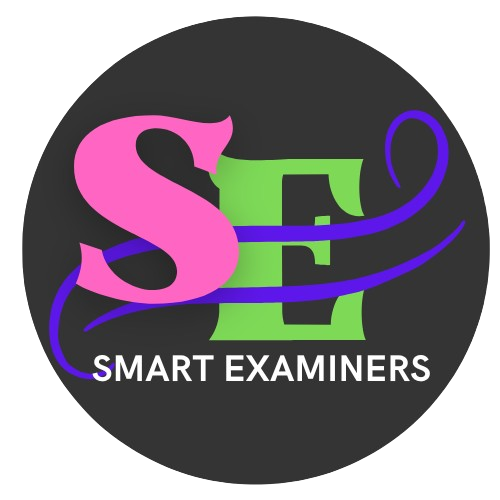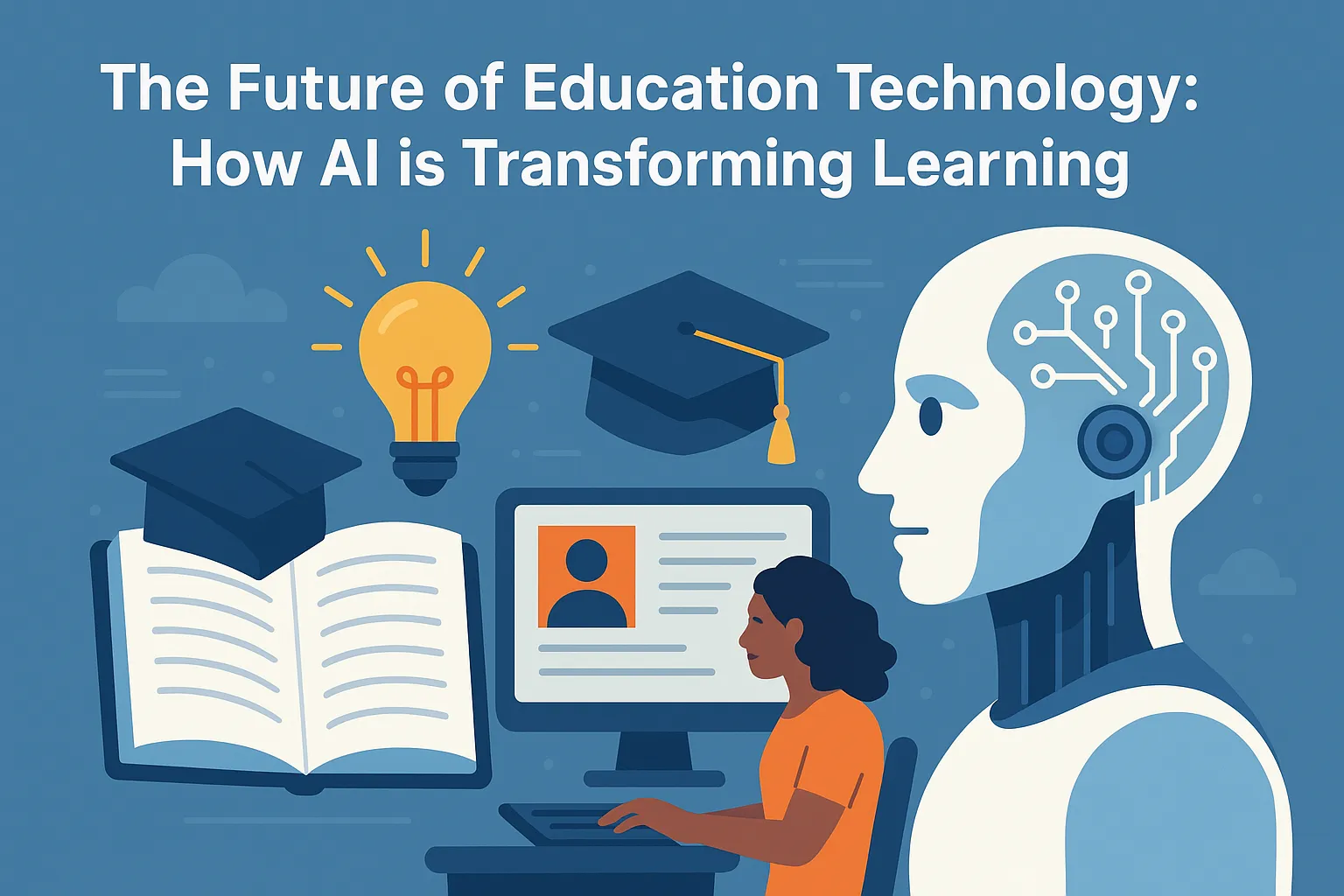Future of Education: 7 AI Tools That Are Changing How Students Learn (2025 Guide)
Introduction
Education technology, commonly known as EdTech, is rapidly evolving, fundamentally altering how teachers teach and students learn. Artificial Intelligence (AI) stands at the forefront of this transformation, offering innovative tools that enhance educational experiences. From personalized learning platforms to AI-driven administrative assistance, the integration of AI in education is reshaping traditional methodologies and paving the way for a more efficient and engaging learning environment.
Emerging Technologies in Education: The Rise of AI in 2025
Artificial Intelligence has transitioned from a futuristic concept to a present-day reality within classrooms. Its ability to process vast amounts of data and adapt to individual learning needs makes it an invaluable asset in modern education.
AI Tools for Personalized Learning in Universities and Schools
AI enables the creation of personalized learning pathways tailored to each student's strengths and weaknesses. Platforms like DreamBox and Khan Academy utilize AI algorithms to assess student performance and adjust content accordingly, ensuring that learners receive material suited to their current understanding. This approach not only enhances comprehension but also fosters a more engaging and motivating learning experience.EdThings
Intelligent Tutoring Systems
AI-powered tutoring systems provide students with instant feedback and guidance, simulating a one-on-one tutoring experience. These systems can identify areas where students struggle and offer targeted interventions, thereby improving learning outcomes. For example, Duolingo employs AI to personalize language lessons, adapting to the user's learning pace and style.
Top Future Educational Technology Trends You Need to Know
Several emerging trends in educational technology are set to redefine the educational landscape, with AI playing a pivotal role in each.
Gamification and Interactive Learning
Integrating game elements into educational content, known as gamification, leverages AI to create adaptive challenges and rewards that align with student progress. This approach increases engagement and motivation, making learning more enjoyable. Interactive platforms that incorporate gamification have shown to improve retention rates and student participation.
Virtual and Augmented Reality
Virtual Reality (VR) and Augmented Reality (AR) technologies, enhanced by AI, offer immersive learning experiences that bring abstract concepts to life. For instance, students can explore historical sites virtually or conduct complex scientific experiments in a simulated environment, providing practical experience without physical constraints.
AI-Driven Administrative Tools
Beyond the classroom, AI assists educators by automating administrative tasks such as grading, scheduling, and resource allocation. This automation reduces the workload on teachers, allowing them to focus more on instruction and student engagement. Tools like TeachScribe utilize AI to transcribe and evaluate student work, streamlining the assessment process.The Guardian
7 AI Tools That Are Changing Education in 2025
The incorporation of AI tools in education has introduced a myriad of resources that enhance both teaching and learning experiences.
Chatbots and Virtual Assistants
AI-powered chatbots serve as virtual assistants, providing students with instant answers to queries and facilitating communication between teachers and students. These virtual assistants can handle a range of tasks, from answering frequently asked questions to providing reminders about assignments and deadlines.
AI-Powered Adaptive Learning Platforms for Higher Engagement
Adaptive learning platforms use AI to modify content delivery based on real-time assessment of student performance. This ensures that each student receives instruction that is neither too easy nor too challenging, promoting optimal learning conditions. Platforms such as Smart Sparrow offer customized learning experiences that adapt to individual learner needs.
How AI is Supporting Special Education Needs in 2025
AI technologies offer significant benefits in special education by providing tools that cater to diverse learning needs. Speech recognition and predictive text applications assist students with disabilities in communication and learning, fostering inclusivity within educational settings.
Challenges and Considerations
While the integration of AI in education presents numerous advantages, it also poses certain challenges that need to be addressed.
Data Privacy and Security
The use of AI involves the collection and analysis of substantial amounts of student data, raising concerns about privacy and security. Educational institutions must implement robust data protection measures and ensure compliance with regulations to safeguard student information.
Equity and Accessibility
Ensuring equitable access to AI-driven educational tools is crucial to prevent widening the digital divide. Schools must strive to provide all students, regardless of socioeconomic background, with the necessary technology and resources to benefit from AI advancements.
Teacher Training and Readiness
Effective integration of AI in education requires adequate training for educators to familiarize them with new technologies and pedagogical approaches. Professional development programs should be established to equip teachers with the skills needed to leverage AI tools effectively.
What’s Next for AI in Education: 2025 and Beyond
The future of education technology is inextricably linked with the advancement of AI. As these technologies continue to evolve, they hold the promise of creating more personalized, efficient, and engaging learning environments. Collaboration among educators, technologists, and policymakers will be essential in navigating the challenges and maximizing the potential of AI in education.
Frequently Asked Questions (FAQs)
How is AI used in education technology?
AI is utilized in education technology to personalize learning experiences, automate administrative tasks, provide intelligent tutoring, and create interactive and adaptive learning environments.
What are the benefits of AI in education?
The benefits of AI in education include personalized learning, increased engagement through interactive tools, efficient administrative processes, and enhanced accessibility for students with special needs.
Are there any risks associated with AI in education?
Yes, risks include concerns about data privacy and security, potential biases in AI algorithms, and the digital divide that may limit access to AI technologies for some students.
How can teachers prepare for the integration of AI in classrooms?
Teachers can prepare by participating in professional development programs focused on AI, staying informed about emerging technologies, and collaborating with peers to share best practices for integrating AI tools into their teaching strategies.
Will AI replace teachers in the future?
AI is designed to augment and assist teachers, not replace them. The human elements of teaching, such as mentorship, emotional support, and critical thinking guidance, remain irreplaceable by AI.
Conclusion
The integration of Artificial Intelligence in education technology is revolutionizing the learning landscape, offering unprecedented opportunities for personalized and efficient education. While challenges exist, the potential benefits far outweigh the drawbacks, making it imperative for educators to embrace and adapt to these technological advancements. AI is not here to take over teachers’ jobs — it’s here to make their work easier, help students learn better, and make schools and institutions more efficient in how they operate.
At the heart of all this transformation is one goal: better education for everyone, regardless of their background, ability, or location.
Real Examples of AI in Education: Kenyan & Global Perspectives
Let’s take a moment and look at how AI is already being used in schools — both globally and right here in Kenya.
Global Examples
-
Squirrel AI in China uses AI to personalize learning for millions of students.
-
Content Technologies, Inc. in the U.S. develops AI tools that create custom textbooks for students.
-
Carnegie Learning combines AI with cognitive science to teach mathematics effectively.
Local Context – Kenya
In Kenya, platforms like MwalimuPLUS and eLimu are helping students revise and access CBC-aligned content. Now with solutions like TeachScribe and SmartExaminers, teachers and learners can:
-
Upload any exam (PDF, Word, image).
-
Instantly get AI-generated answers.
-
Preview answers before paying — full transparency.
-
Pay a small fee (KES 50 or $2) to download detailed, ready-to-print answers.
✅ Try it out at SmartExaminers.com
 SmartExaminers
SmartExaminers


